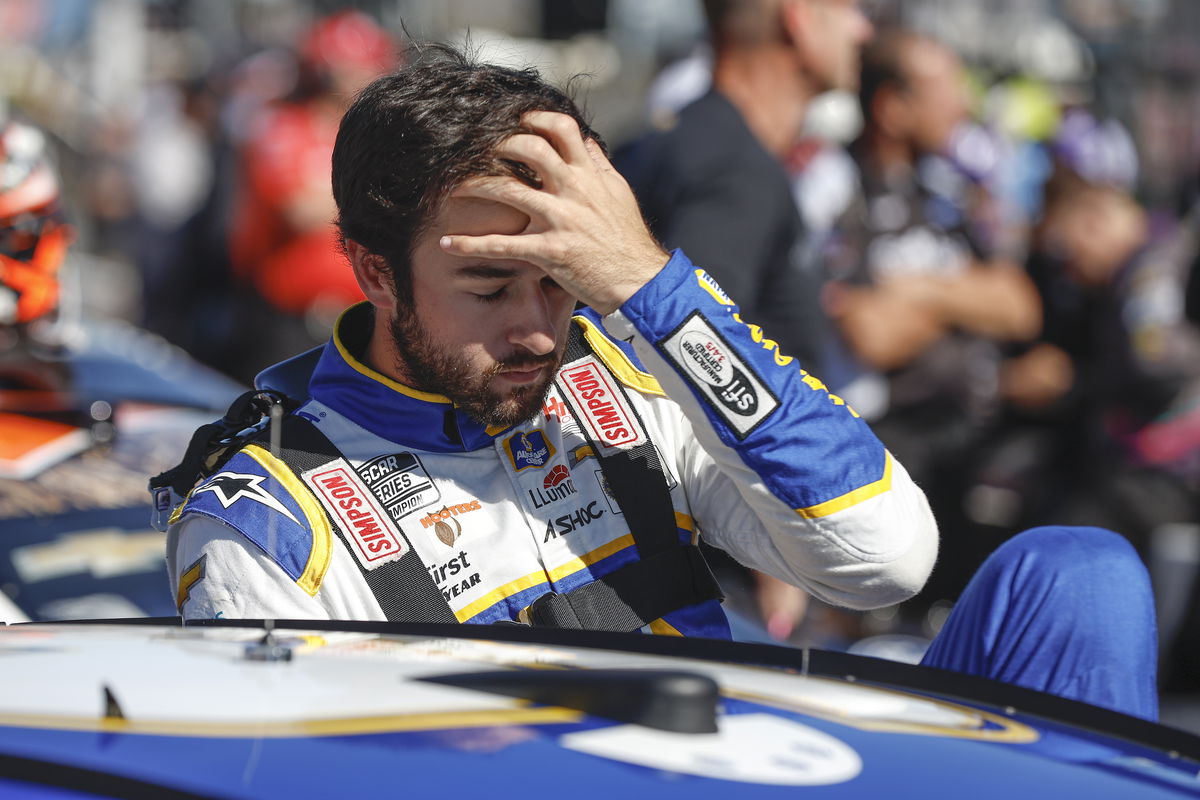
Getty
TALLADEGA, ALABAMA – OCTOBER 01: Chase Elliott, driver of the #9 NAPA Auto Parts Chevrolet, enters his car during qualifying for the NASCAR Cup Series YellaWood 500 at Talladega Superspeedway on October 01, 2022 in Talladega, Alabama. (Photo by Sean Gardner/Getty Images)

Getty
TALLADEGA, ALABAMA – OCTOBER 01: Chase Elliott, driver of the #9 NAPA Auto Parts Chevrolet, enters his car during qualifying for the NASCAR Cup Series YellaWood 500 at Talladega Superspeedway on October 01, 2022 in Talladega, Alabama. (Photo by Sean Gardner/Getty Images)
It seemed like just another road course race on the calendar. Watkins Glen was packed with fans on a hot summer afternoon when a young Chase Elliott was raring to go at the 2018 Go Bowling at The Glen. Driving the No. 9 Chevy for Hendrick Motorsports, he started the race in third place, won Stage 2, and held off reigning champ Martin Truex Jr. to win by a staggering 7.560 seconds. The win sent shockwaves in the NASCAR community, as it signaled the start of a new era and the arrival of a new road course king on the block.
Watch What’s Trending Now!
From that Sunday onwards, Elliott became road-course ‘royalty’. Between 2018 and 2021, he won on such tracks seven times, including back-to-back triumphs at ‘The Glen’. He also entered Victory Lane at the Charlotte Roval, Road America, Circuit of the Americas, and made a statement at Daytona’s road configuration. Just like present-day Shane van Gisbergen, the Georgia-native was a master on road courses, showing the kind of dominance few thought was possible at such venues.
For Chase Elliott’s fans, the expectation was simple. The No. 9 Chevy was expected to challenge for the win every time the calendar had a road course on it. With the stock car racing series looking to expand the sport by shaking up the calendar, the racer was in the right place at the right time to take advantage of the transition. Many felt he was Jeff Gordon’s successor, and Elliott quickly built the reputation of being the man to beat whenever the calendar moved away from oval tracks.
ADVERTISEMENT
But everything changed when the Next-Gen car was introduced. Elliott’s last road course win was at Road America in 2021, highlighting just how challenging it has been for the racer to adapt to the new equipment. Sure, he has multiple podium finishes since then, but he has gone winless in more than a dozen road events.
Results have been hard to come by at Watkins Glen as well, which was once his fortress. He finished 26th at the venue earlier this year and 19th in 2024, a stark contrast from his performances back in the good old days. However, every now and then, the 29-year-old shows glimpses of his old form, as seen in his fourth-place finish at COTA and third-place results in Mexico City and Sonoma Raceway this season.
ADVERTISEMENT
The Rise: How Elliott Built the Road Course Throne
Chase Elliott didn’t get his road course reputation by accident. When he made his way into the Cup Series in 2016, such tracks weren’t a staple on the calendar, with only Sonoma and Watkins Glen being featured. However, the racer could adapt quickly because of his stint in the Xfinity Series, where he had shown flashes of brilliance during his two seasons with JR Motorsports. His breakthrough win at The Glen not only gave him confidence but also proved he had the technical know-how to compete on niche tracks.
The wins piled up quickly afterwards. Elliott won at ‘The Glen’ again in 2019, while he bounced back from a crash into the Turn 1 barrier at the Charlotte Roval to take the win at the Bank of America Roval 400. He even held off Denny Hamlin and led 34 of 65 laps at Daytona’s temporary road course in 2020, and conquered the Circuit of the Americas the following year in tricky conditions, proving just how versatile he can be when push comes to shove.
ADVERTISEMENT
It wasn’t just the results that stood out, but the way he did it. Chase Elliott approached restarts fearlessly and took risks to gain track positions that others wouldn’t dare to attempt. He raced with such finesse that he could out-brake rivals without locking up, showing the kind of performances fans hadn’t seen since the Jeff Gordon days in the 1990s and 2000s. However, the Georgia-native struggled to keep up the road course dominance in the Next-Gen era, with NASCAR getting international drivers such as Shane van Gisbergen in the mix.
Top Stories
Kyle Busch Hits Rock Bottom as Snowball Derby Nightmare Sparks Wave of Fan Sympathy
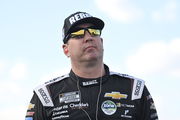
Dale Jr.’s Media Empire Targeted as YouTuber’s Unjust Attack Sparks Fan Outrage

‘RIP’: NASCAR World Crumbles in Tears as 39-YO Former JR Motorsports Driver Passes Away
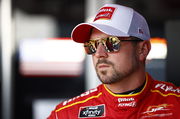
Carson Hocevar Takes a Sly Dig at NASCAR’s Data-Driven Gimmicks in Honest Dirt Track Rant
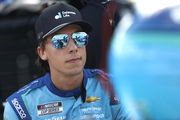
Kevin Harvick Son Keelan Silences Critics With Masterclass Comeback to Hunt Down Rivals in Biggest Career Win
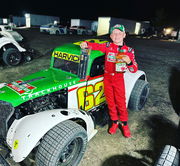
The Fall of the Road Course King
The decline didn’t happen overnight. Even in 2022, when the new car was introduced, Chase Elliott was looking as formidable as ever, winning races at Dover, Nashville, Atlanta, Pocono, and Talladega Superspeedway. Just like the season before, he ended up 4th in the standings, but there were subtle cracks visible in his performances that year. Elliott finished runner-up at Road America and fourth at Watkins Glen, races he would have won at usually, proving that while he’s still strong on road courses, he was no longer invincible.
ADVERTISEMENT
Things got even worse in 2023. Elliott missed six races at the start of the season because of a leg injury from a snowboarding incident, which disrupted his rhythm. He ended the season winless for the first time since 2017, and struggled to make a mark on road courses as well. There were encouraging signs, though, like finishing fifth at Sonoma Raceway and third at the Chicago Street course, but Watkins Glen, which was once a happy hunting ground for Elliott, became the stuff of nightmares, as he ended up 32nd at the 2.45-mile road course.
Opening up about his injury, Chase Elliott recently revealed, “I was just out snowboarding with a friend of mine. Grew up snowboarding, and it was a very familiar place that I have been going to for a long time. Just kind of caught that perfect storm, landed on my knee wrong, and unfortunately, that was the day it was going to give out. Yeah, fractured it in a couple of different places.”
Perhaps it was the after-effects of the injury, but the slump continued in 2024. Elliott’s average finishes on road courses dipped significantly, and he often qualified poorly and struggled to gain track positions after starting outside the top-10. His laps led on road courses dropped to almost zero, a significant drop for a driver who once dominated on such venues. As things stand, his ongoing Cup Series campaign isn’t going much better. While Elliott has shown flashes of his racing course prowess at the Autódromo Hermanos Rodríguez and Sonoma Raceway by finishing on the podium, Victory Lane continues to elude him.
ADVERTISEMENT
Meanwhile, his rivals have continued to go from strength to strength. Tyler Reddick has emerged as the new road course specialist in the Cup Series, winning at Road America in 2022 and Circuit of the Americas the following year. Michael McDowell is also a force to be reckoned with on such tracks, while Shane van Gisbergen has already secured four wins on road courses in his rookie season, outshining Chase Elliott at every opportunity.
The Next Gen Equation
For many NASCAR veterans, the Next-Gen car has completely changed the game. While the likes of Kyle Larson and Denny Hamlin have adapted to the newer technology, Kyle Busch, Brad Keselowski, and Chase Elliott have struggled in recent years. The car’s independent rear suspension, larger brakes, and sequential gearbox should have, in theory, suited the No. 9 Chevy driver’s racing style, but he admitted in an interview that the balance feels unfamiliar.
ADVERTISEMENT
He said, “Since the new car came in, it’s been totally different, truthfully. The success in this new car, it’s not even a different chapter. It’s like a different book. So, I wouldn’t even compare that if it were me. I think it’s just happenstance that we have fired off well.”
The Next-Gen car’s braking system has been specifically designed for durability and heat management, with NASCAR upping its safety standards in the Cup Series. However, the change in design also requires the driver to adapt, an aspect Chase Elliott has struggled with, particularly in heavy braking zones that were once his strength. Meanwhile, Shane van Gisbergen made his name in Supercars using similar technology, and he managed to hit the ground running by winning on his debut at the Chicago Street course.
Rear-end stability of the Next-Gen car has also been a big issue. The car has been designed in such a way that it becomes slightly unstable after putting the pedal to the metal, and Elliott’s aggressive exits on corners have, at times, produced wheelspins and tire wear that have influenced the race’s outcome in the long run. For example, at the 2024 Go Bowling at The Glen, the Georgia-native started in the middle of the pack, but wasn’t able to gain track position after struggling for grip.
ADVERTISEMENT
Strategy and Setup Misfires
The poor road course results aren’t just down to Chase Elliott, though. Such outcomes are decided on the pit road as well, with strategy playing a big role in translating those podium finishes into race wins. Once upon a time, Hendrick Motorsports set the standard for road-course setups, but NASCAR’s most successful team now lags behind some of its competitors in adapting simulation data and tire models for the Next Gen cars.
At the Circuit of the Americas in 2023, Elliott was made to stay out during a critical caution despite running worn-out tires, and the decision backfired during the restart. And last year at Sonoma Raceway, a miscalculation about the fuel window forced him to pit under green while contenders passed him by.
ADVERTISEMENT
At Watkins Glen in 2023, Chase Elliott saw his No. 9 Chevy run out of fuel with 36 laps to go, a situation that didn’t go down well with the racing driver. Speaking on the team radio, he said, “F–king bad information. I am on two (turn). I am out of gas.” To this, his crew chief responded, “I know, just come to us whenever you can; it’s f–king wrong information,” but the damage was already done by then. A dejected Elliott then replied, “I am not going to make it, so I guess I will just stop here.”
While Alan Gustafson remains a steady presence atop the pit box, the No. 9 crew needs to be sharper when it comes to making decisions such as pit timing, tire compound choices, or restart lane selection. After all, NASCAR has always been a sport defined by fine margins, and the minor details make big differences in the end.
Mental Wear and the Injury Factor
Expectations will always be high for Chase Elliott. As NASCAR’s most popular driver and Bill Elliott’s son, it’s hard not to feel weighed down by the pressure. Fans still expect the 29-year-old to reclaim the title of ‘Road Course King,’ and every poor performance just deepens the media scrutiny. Sure, that’s a situation every high-profile Cup Series driver has to deal with, Elliott more so than others, and being subjected to that burden might be playing a role in his struggles.
Back in 2023, Elliott’s leg injury didn’t just cost him six races, but it also affected his momentum. In a sport like NASCAR, rhythm can make or break a season, and missing weeks of action at the very start of his campaign meant the Georgia-native found it difficult to hit the ground running when he got back. And in the last few years, his body language has spoken volumes despite his politically correct stance in interviews.
Even Dale Earnhardt Jr. opened up about Elliott’s struggles, saying, “He got injured in a snowboarding deal; I know that was a while ago, but that little disruption sort of set him back, and the team just couldn’t ever find their groove or find their speed and some consistency and get him comfortable. For a while, it was really a struggle.” However, the veteran concluded by saying, “I know he’s probably disappointed, but I think they’ve improved and are starting to head in the right direction.”
What It Will Take for a Comeback
It’s not beyond the realm of possibility that Chase Elliott can reclaim his ‘Road Course King’ title once again, but it’s easier said than done. To start with, the racer will need to embrace the Next-Gen car’s quirks and make them his strength, rather than fight against them. He will also need to work with the No. 9 crew to prioritize qualifying speed and avoid the mid-pack traffic during the race. Pit strategy and its execution will also need to be on point for him to get back to winning ways.
Elliott might also need to take outside help. No driver in the last few years has been as dominant on road courses as Shane van Gisbergen, and while the Trackhouse Racing star is officially a ‘rival’, relying on video footage to analyze his racing lines, strategy, and general driving style might help the 29-year-old rediscover his edge. In an interview with The Athletic, Chase Elliott even said, “I don’t know if he’ll (SVG) even answer this to the depth I would want, but what is the No. 1 habit that works for him in road-course racing that he feels like works against him in oval racing?”
Apart from looking at Shane van Gisbergen for inspiration, more time on simulation and perfecting the road course setup for the No. 9 Chevy will also ensure he doesn’t lag behind teammates Kyle Larson and William Byron. With NASCAR looking to expand, it’s clear that road course races are here to stay.
This means that Chase Elliott will have plenty of opportunities to redeem himself in the seasons to come. And despite his recent struggles at Watkins Glen, the road course remains one of his favorite venues, and he’ll use the 2.454-mile track as a target to get back to winning ways. Ultimately, a single breakthrough can change the narrative around his road course comeback, as long as Elliott and his team remain methodical about their approach.
Conclusion: A Legacy Still Intact?
Chase Elliott’s slump is undeniable, not just on road courses but on ovals as well. Back in the day, it looked almost a certainty that he would dethrone both Tony Stewart and Jeff Gordon to become the most successful NASCAR road course driver of all time, but clearly that hasn’t worked out. Blame it on the Next-Gen cars, strategy errors, or more formidable rivals such as Shane van Gisbergen, but it’s proof just how dynamic the stock car racing world can be. But there’s a silver lining.
Jeff Gordon went winless on road courses for a long time after his peak, while Tony Stewart also had his share of dry spells before rebounding. Ultimately, it’ll all come down to Elliott’s ability to adapt. His legacy is secure, but to keep his throne, the 29-year-old will need to evolve with the sport. The competition has now caught up, and the Next-Gen car has given a level of parity few thought would be possible. Elliott still has years left in the tank, and as they say, ‘form is temporary, class is permanent’. Perhaps he’ll prove his naysayers wrong by reclaiming his title once again.
ADVERTISEMENT
ADVERTISEMENT
ADVERTISEMENT

